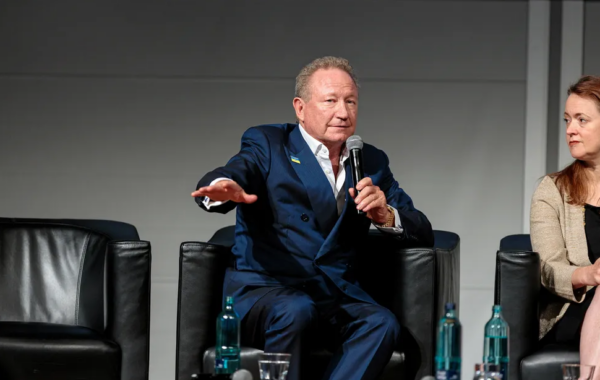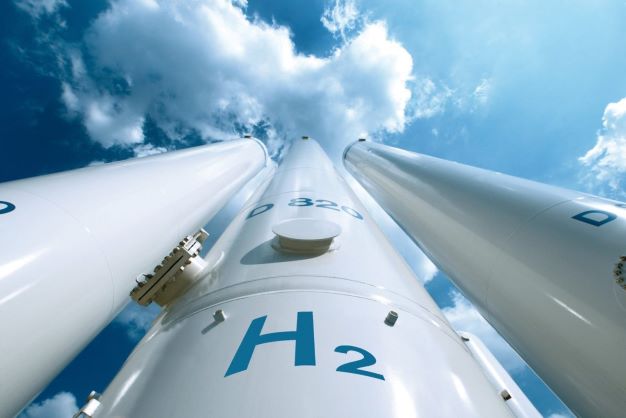The Australian federal government has included more than $8 billion (USD 5.3 billion) in its 2024-25 budget to support renewable hydrogen production, assigning $2 billion to expand the exisiting Hydrogen Headstart program and $6.7 billion to establish a hydrogen production tax incentive (HPTI).
The HTPI will subsidise by $2 every kilogram of green hydrogen produced in Australia between 1 July 2027 and 30 June 2040, for up to 10 years.
Fortescue Executive Chairman Andrew Forrest said the government had a “one shot in the barrel” opportunity with the budget to ensure Australia fulfilled its potential to become “the Saudi Arabia of energy production.”
“Through the $2 per kilo tax credit for green hydrogen production, the government has seized this opportunity for the Australian people because green hydrogen, green ammonia and green iron will create economic opportunities of historical scale into the long term and help lower power prices permanently,” he said.
“Once Australia was considered as riding on the sheep’s back, then the resources sector kept the steel in Australia’s economic spine. Kept simple, this incentive will give much greater and longer-term benefits to our economy.”
Forrest also said the tax incentive would fast-track the development of a green iron industry in Australia, boosting employment and cutting steel production’s global emissions.
“Fortescue is already trialling its decarbonisation green hydrogen technology at its major Chichester operations, one of the largest iron ore producers in the world,” he said.
“It is crucial to getting green hydrogen projects off the ground fast and at a scale to build a major domestic industry and market which will lower the cost of energy for every single Australian by making green hydrogen competitive with fossil fuels, spurring massive renewable energy projects in sparsely populated regions where employment is needed most.”

Green Hydrogen Organisation
Hydrogen Headstart – round two
The $2 billion expansion of the Hydrogen Headstart program, which is administered by the Australian Renewable Energy Agency (ARENA), adds to $315 million already invested in 48 renewable hydrogen projects since 2017, including regional hydrogen hubs in the Hunter, Gladstone, and the Spencer Gulf.
Headstart round two will begin at the conclusion of round one, which is expcected to be announced on October 2024. Six applicants are currently vying for funding under round one, also valued at $2 billion, and between them represent a total electrolyser capacity of more than 3.5 GW across various end uses. ARENA expects up to three projects may be supported from the first round.
ARENA Chief Executive Darren Miller said the Hydrogen Headstart program represents an important step towards Australia becoming a global renewable hydrogen leader and additional funding for the program allows formore projects to reach maturity and fast track the renewable hydrogen industry.
“The current shortlisted applicants for round one highlight the commitment from the private sector to develop this new industry,” he said.
Australian Hydrogen Council (AHC) Chief Executive Fiona Simon said the organisation welcomes the government’s investment, noting it is needed to match the ambition and opportunity of the hydrogen and manufacturing industries, and trading partners.
“Hydrogen delivers comparative advantage to Australia not only as a molecule but as the critical pathway to decarbonise hard to abate sectors, and establish new high value exports in green steel, green iron and green ammonia,” she said.
“This budget reflects that production; technology and jobs are all essential parts of ensuring a future made in Australia for hydrogen.”
Climateworks Centre Sustainable Economies Lead Kylie Turner said Australia has enormous green hydrogen potential, and the centre’s modelling shows that local hydrogen demand for industry, long-haul freight and maritime shipping could reach up to 145% of total energy demand in 2050 across Australia.
“This is a crucial year for Australia’s climate ambition, with the federal government’s sector decarbonisation plans expected to be released in the second half of 2024,” she said.
An initial focus on renewable hydrogen will also drive the Guarantee of Origin scheme which received $32.2 million in the Budget, to measure and certify emissions intensity across supply chains of key products and support the expansion of the program to green metals and low carbon liquid fuels.
Engineers Australia CEO Romilly Madew said clean hydrogen is the Swiss army knife of energy transition, due to its versatility across the transport, industry, and power sectors.
“By establishing a robust regulatory and policy framework, and by securing necessary funding for research, development, and commercialisation, we can fully unlock and leverage hydrogen’s vast potential within Australia’s economy,” she said.
The National Hydrogen Strategy, which maps Australia’s clean hydrogen potential for growth outlining infrastructure planning, social license and industry safety training and regulation, also received $17.1 million over four years from 2024-2025.
With no carbon emissions, hydrogen provides a way to store energy from solar photovoltaics and wind, which can then be used to export, secure the electricity grid, store excess renewable energy, use electrolysers as flexible load and decarbonise hard-to-abate industry.
This content is protected by copyright and may not be reused. If you want to cooperate with us and would like to reuse some of our content, please contact: editors@pv-magazine.com.








1 comment
By submitting this form you agree to pv magazine using your data for the purposes of publishing your comment.
Your personal data will only be disclosed or otherwise transmitted to third parties for the purposes of spam filtering or if this is necessary for technical maintenance of the website. Any other transfer to third parties will not take place unless this is justified on the basis of applicable data protection regulations or if pv magazine is legally obliged to do so.
You may revoke this consent at any time with effect for the future, in which case your personal data will be deleted immediately. Otherwise, your data will be deleted if pv magazine has processed your request or the purpose of data storage is fulfilled.
Further information on data privacy can be found in our Data Protection Policy.